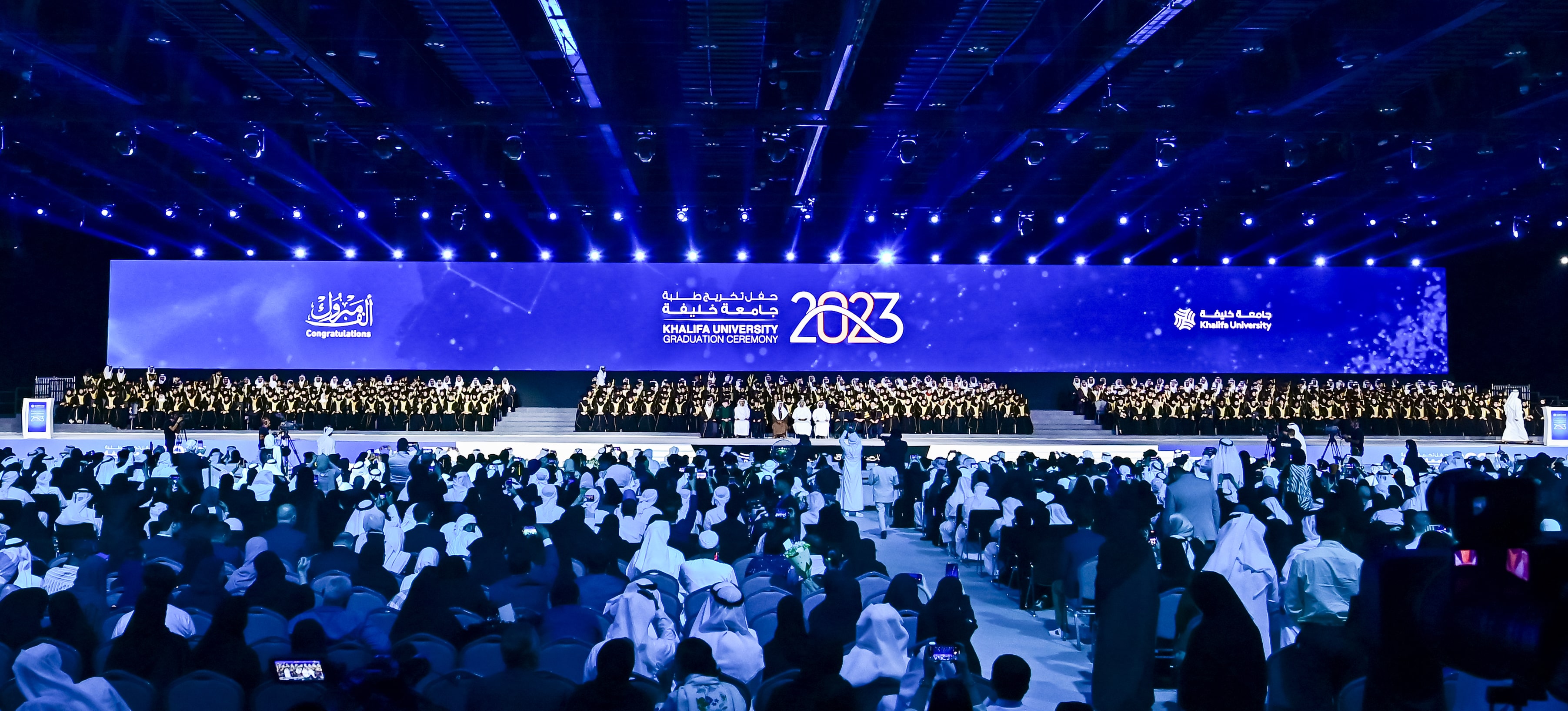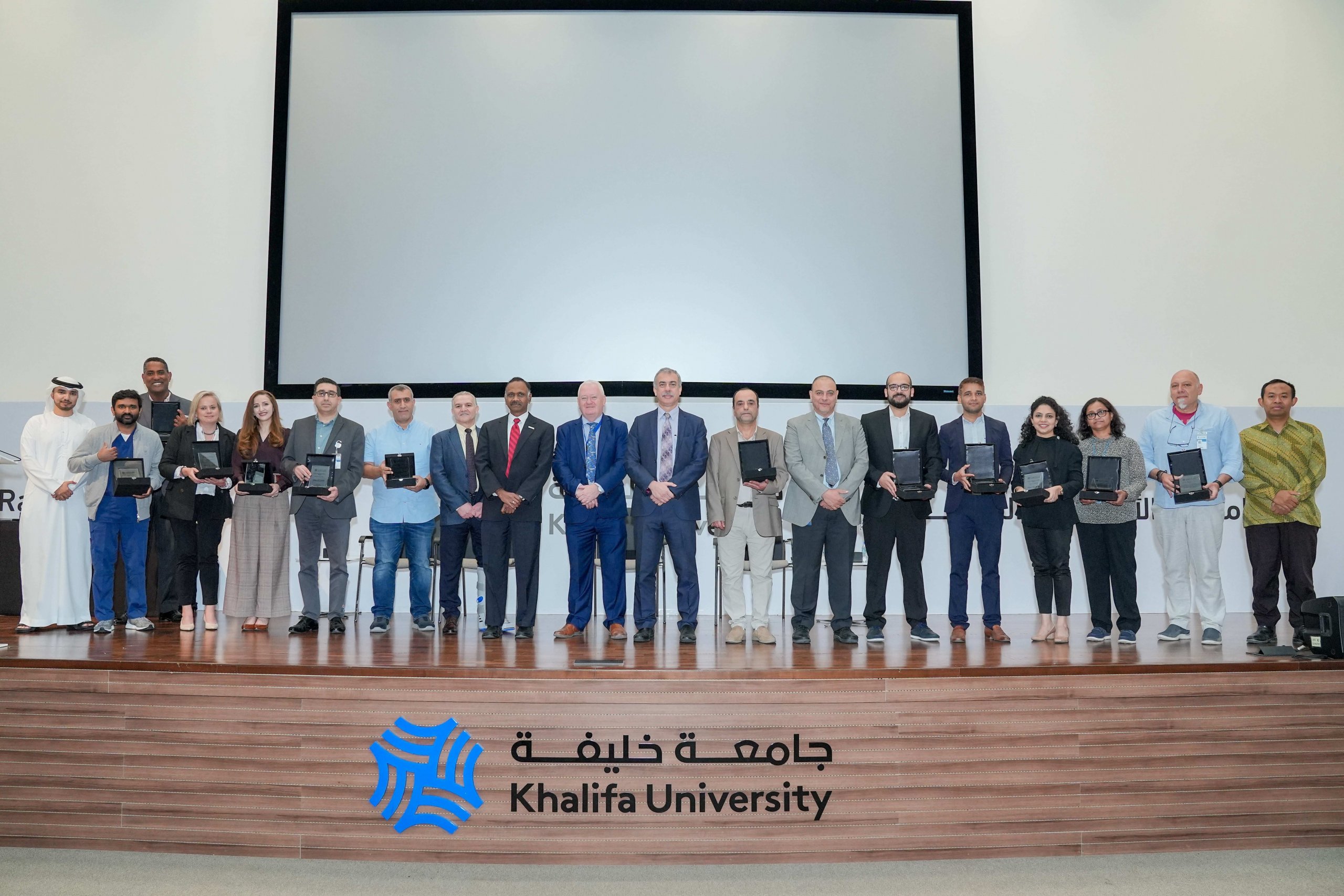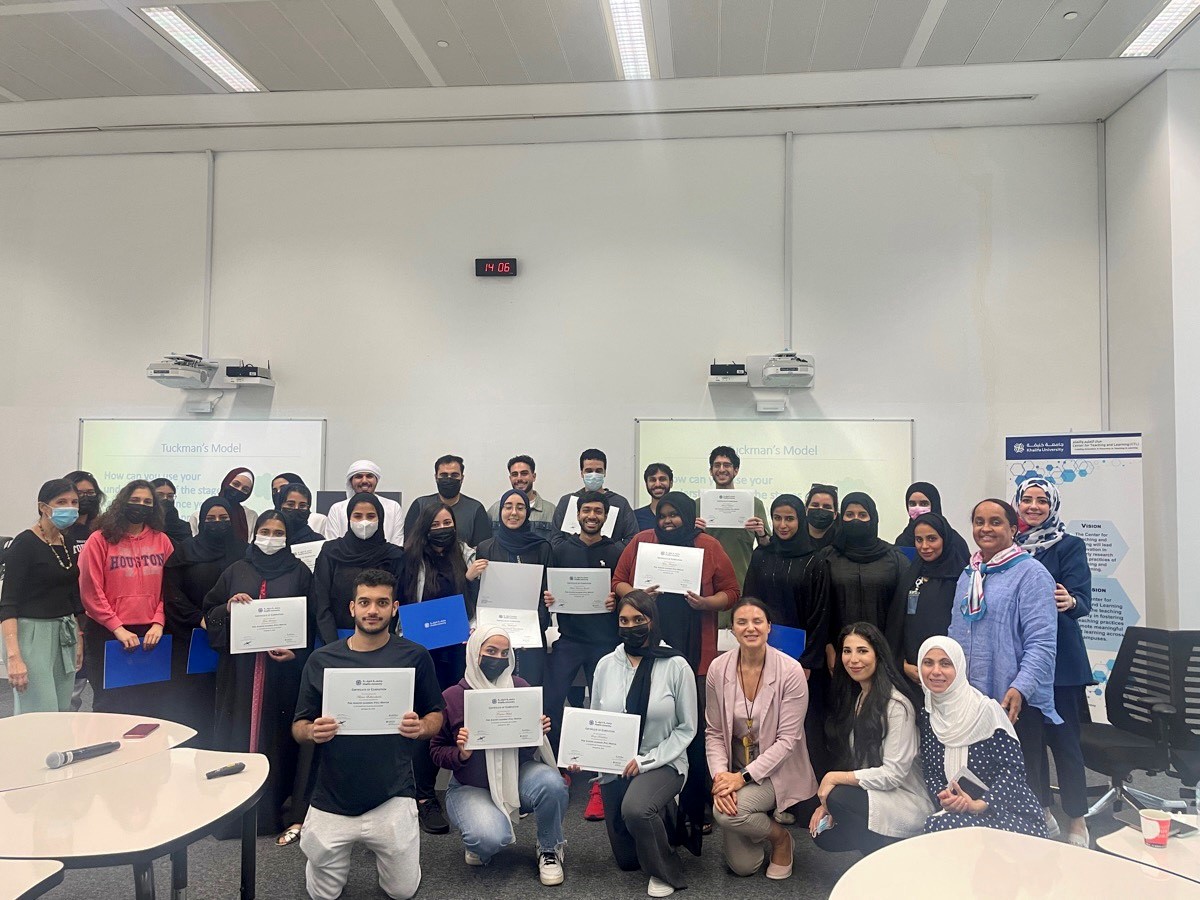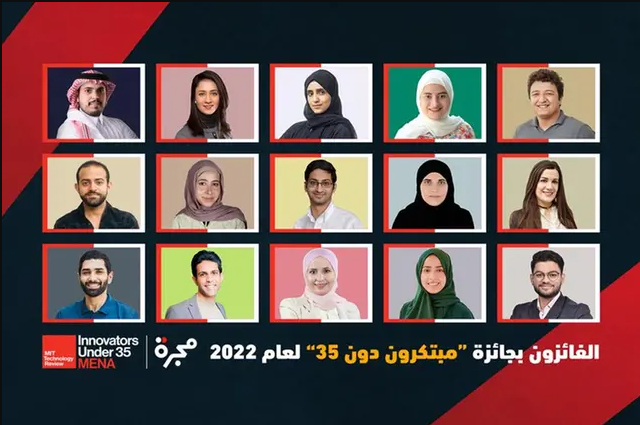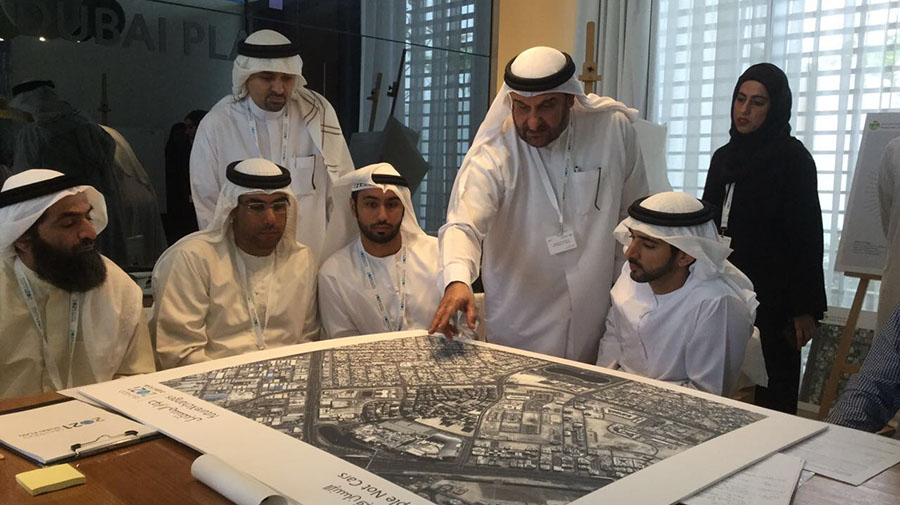
The UAE’s streets must be planned and designed to serve communities, ease mobility and enhance economic productivity as well as social engagement, Masdar Institute Assistant Professor of Engineering Systems and Management Dr. Khaled Al Awadi highlighted during a session he led at the DubaiPlan 2021 Creative Lab, titled “FutureXChanges,” which was held last week in Dubai.
Dr. Al Awadi’s session, titled “People Not Cars,” was one of eight strategic creative labs conducted during the two-day event. The labs were aimed at developing solutions to help accelerate the implementation of the DubaiPlan 2021, which is an initiative to support sustainable development of the emirate in a way that boosts residents’ happiness and productivity while strengthening its economy and preserving its environment.
During the “People Not Cars” session, Dr. Al Awadi and PhD student Ahmed Alumulla and MSc student Maryam Almheiri, moderated a series of discussions, workshops and other activities that helped participants understand how strategic urban design principles could be leveraged to enhance the livability and walkability of streets in suburban neighborhoods in Dubai.
“People Not Cars” received active participation from H.H. Sheikh Hamdan bin Mohammed bin Rashid Al Maktoum, Crown Prince of Dubai, and Chairman of the Executive Council. The lab also involved insightful contributions from several other high-ranking government officials.
“Development today resembles a state of endless and unbounded suburbia. With the growth, and swelling social and economic reliance on suburbs, participants of this creative lab explored how suburbs may be improved and become more walkable through better design and planning,” Dr. Al Awadi explained.
During the two-day creative lab, constructive arguments were made to improve suburbs’ public realm, including streets, through better design and planning to encourage greater walkability – which is a measure of how safe and convenient it is to travel by foot through a city.
“Intelligent and sustainable urban design of residential neighborhoods must incorporate convenient and safe pedestrian facilities and infrastructure. Planting and landscape must be strategically used to enhance thermal comfort and the pedestrian walking experience,” Dr. Al Awadi remarked.
However, challenges to achieving this type of sustainable, walkable design through landscape are present at the infrastructure level of existing neighborhoods.
“The challenge remains in the service lines below the ground with the existing horizontal distribution of infrastructure lines (for communication networks, drainage system, power and water lines, irrigation channels, etc.), limiting the opportunity for designing shaded walkways with trees, as trees may damage the service lines below the ground,” Dr. Al Awadi shared.
Other challenges that impede sustainable urban design that would enhance people’s walking experience include the extreme climate and the physical design of existing neighborhoods, which facilitate car movement rather than pedestrian movement. Many claim that the region’s hot and arid environment make walking unpleasant. This is in fact a general perception, as the climate is really pleasant for approximately five months each year, and encouraging people to walk during this period, especially for short distances, has great implications on the environment and people’s physical and mental wellbeing.
“Cars are prioritized and pedestrians are sidelined. Neighborhoods tend to be low-density and large in scale, therefore walking to any destination becomes extremely inconvenient,” Dr. Al Awadi said. “We need to shift our priority to pedestrians as early as the planning phase in order to improve environmental sustainability and people’s health.”
Participants in Dr. Al Awadi’s lab performed a comprehensive urban analysis on a selected area in Al Barsha, a suburban Dubai neighborhood. The analysis incorporated design elements such as existing urban furniture and landscape, shading and cooling, building and land use mixture, and street network system. Through a series of workshops, the participants reviewed the street design process to include walkability and livability elements, which were defined throughout the lab.
Dr. Al Awadi encouraged participants to consider what new land use systems, design tenets, and planning policies are needed to ensure that suburbs become more sensitive climatically and socially, providing a sustainable and healthy living environment so that people, not cars, are prioritized.
Erica Solomon
News and Features Writer
4 April 2017



